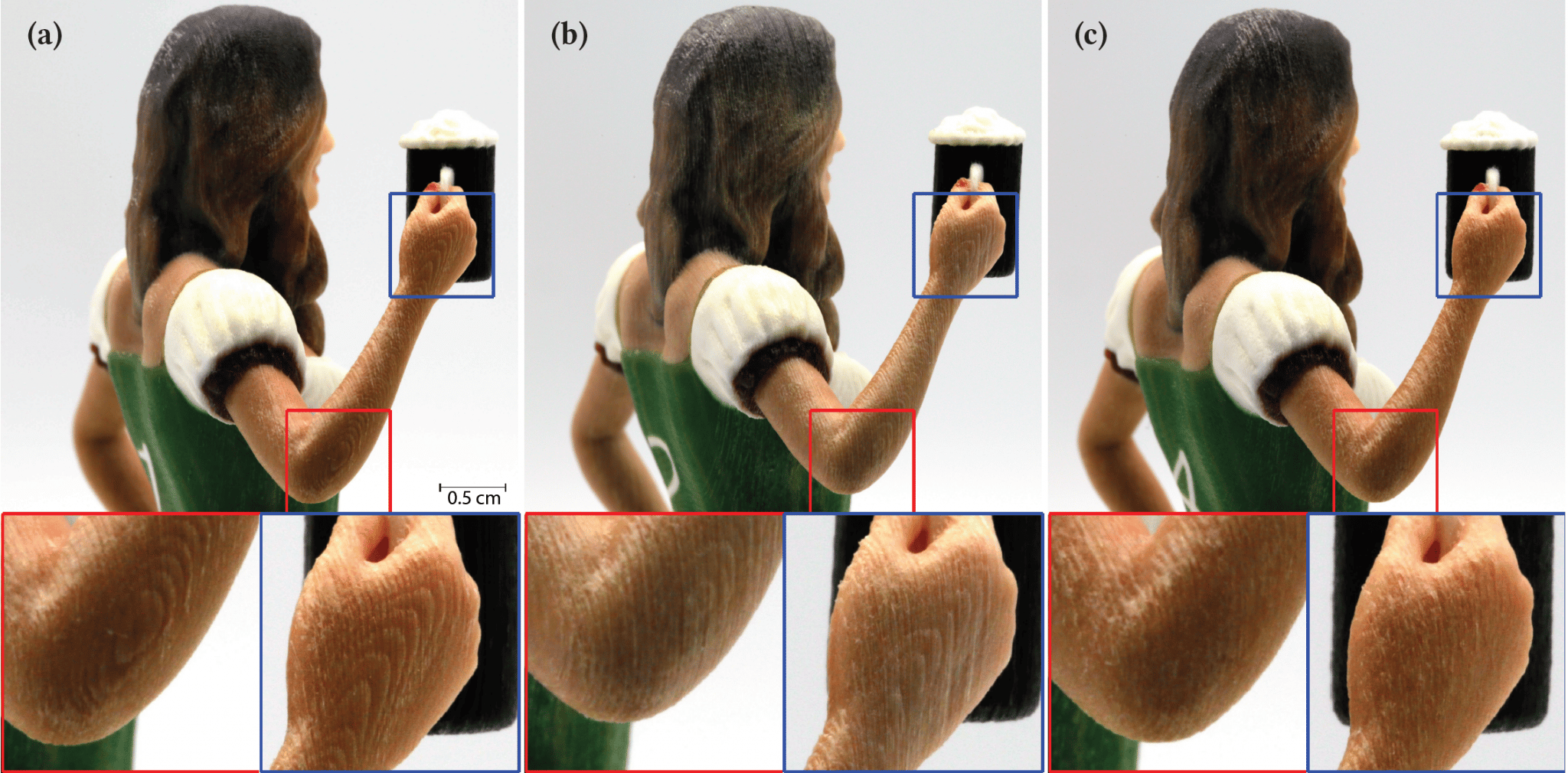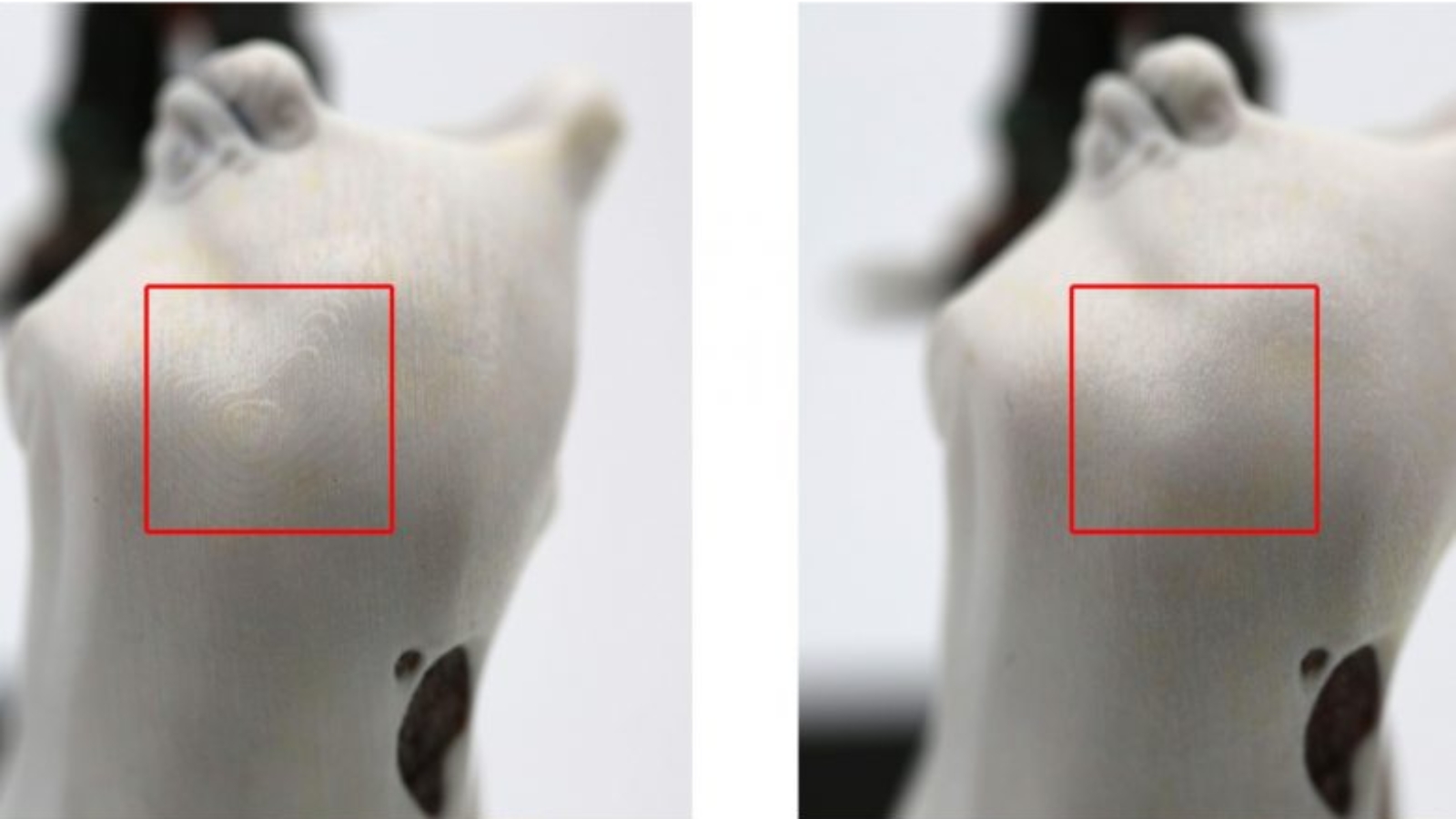Scientists at Fraunhofer IGD – Mostafa Morsy Abdelkader Morsy, Alan Brunton, and Philipp Urban – whose ‘3D Printing Technology’ department is responsible for the creation of Cuttlefish, have devised a purely geometric and algorithmic method for the elimination of stair-step artifacts in multi-material 3D printing. To avoid quantization errors, the surface of the object is modulated with a high-frequency signal. This results in geometrically accurate and color-true surfaces. The research team has set down their findings in a paper titled ‘Shape Dithering for 3D Printing’, which will be published to coincide with SIGGRAPH, the premier conference, and exhibition on computer graphics and interactive techniques – where the research will be presented by the lead author, Mostafa Morsy Abdelkader Morsy.
Stair-step artifacts are unavoidable in conventional 3D printing processes. They are visually unappealing and can also be structurally detrimental to the print. To generate more accurate surfaces, researchers at the Fraunhofer Institute for Computer Graphics Research IGD have developed a new process for polyjet printers – minimizing quantization errors so that stair-step artifacts are no longer noticeable in actual printing, and are at a level far below the physical effects of the printing process. This results in objects with a smoother and more uniform surface.

Manufacturing on Demand
The process is used, for example, in the entertainment industry, where figures and objects are printed for animated movies, video games, and board games. In contrast to previous processes, they benefit from the geometric and color precision conferred by the shape-dithering approach – making them look especially realistic.
The dithering process can be used as a purely algorithmic method, independently of the hardware (i.e. with different polyjet 3D printers). The solution presented in the research paper is used with the Cuttlefish 3D printer driver developed by Fraunhofer IGD. Based on the results now published – in the future, the scientists will investigate the further hypothesis of whether the smoother surface of the printed objects also makes them more resilient.
You might also like:
ASICS releases ACTIBREEZE 3D (printed) SANDAL: Other key design elements of the ACTIBREEZE 3D SANDAL include a thick, open lattice structure, that delivers excellent cooling and breathability – with the sandal proven to keep temperature and humidity levels on foot lower than other recovery sandals currently on the market, according to ASICS. The sandal’s extra-wide base provides a soft, stable platform. All of these features combine to help optimize a recovering athlete’s After Performance phase, helping them perform at their peak, come the next race day.
* This article is reprinted from 3D Printing Media Network. If you are involved in infringement, please contact us to delete it.
Author: Edward Wakefield


Leave A Comment